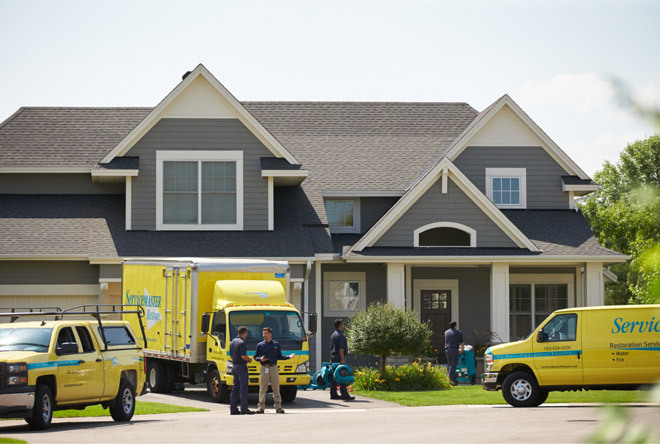Residential Mold Inspection & Removal Services in Vallejo, CA
Mold Remediation Specialists Available 24/7
Mold is one of the worst contaminants you can find in your home. Though not always visible or easy to spot, it can silently wreak havoc on your property.
Did you know mold can begin growing on a wet surface within 48 hours? It can grow anywhere indoors where there are wet or damp surfaces, including on ceilings, wallpaper, wood, drywall, and insulation material. If left unchecked, mold can impede your quality of life and put the structure of your home at risk.
ServiceMaster Restoration Services - Benicia is here to protect your home from mold damage with our mold detection and removal services. If you see signs of mold in your home, or if you recently had water damage and believe there could be mold growing somewhere, don’t hesitate to give our team a call.
Dial(707) 691-0825 for Vallejo mold inspection and removal services!
Professional Mold Removal Near You
We use advanced tools and processes to detect any mold that may be present in your home, and then use specialized chemicals for mold removal. Mold may be everywhere in nature, but it doesn’t belong in your house!
Our mold remediation services are available in:
- American Canyon
- Benicia
- Birds Landing
- Davis
- Dixon
- Elmira
- Fairfield
- Rio Vista
- Suisun City
- Travis Afb
- Vacaville
- Vallejo
- Walnut Grove
- Winters
Comprehensive Mold Mitigation Solutions
You should be aware that mold is an inevitable part of nature, and it can find its way into your home in a variety of ways. In the presence of moisture, these microscopic spores can flourish and quickly become a serious problem. The first sign that action needs to be taken is usually a strong, musty smell. It is imperative to identify and eliminate the mold's water source in order for mold remediation to be successful. We recommend an indoor humidity of 30% - 50% to prevent future mold growth.
What Are the Warning Signs of Mold In Your House?
Not sure if you have mold in your home?
Here's what you should be on the lookout for:
- Dark spots on your floors, walls, or ceilings
- Musty odors of mildew
- Respiratory and allergy issues
- High humidity levels resulting in condensation on glass or metal surfaces
How To Test For Mold Exposure
There are several ways that you can test for mold exposure, including:
- Air Sampling Tests - involve collecting airborne particles from your home using special equipment like an air pump or sampler collector device. This type of test will measure the concentration of spores present in the air.
- Surface Testing Kits - allow you to collect samples from surfaces around your home where mold is suspected. These collections should then be sent off for laboratory analysis where they will determine if there are any elevated levels of fungal contaminants present.
- Bulk Samples - require you to collect at least 2 inches of material from the contaminated items. This includes samples from drywall, carpet, wood, etc. You can ship your sample to a lab that specializes in identifying fungal contaminants for a thorough evaluation.
Overall, all three methods mentioned are effective in identifying mold in your home. If your test results indicate an infestation, we highly recommend hiring a professional to address the situation. Mold can quickly become a very dangerous and destructive house guest.
Why Hire ServiceMaster
It is no secret that ServiceMaster is one of the leading companies in the mold removal industry. Our mold remediation company has over 60 years of experience providing quality service and products. We offer specialized mold removal solutions tailored specifically to your unique needs. Our treatments are designed to eliminate existing colonies and prevent future growth. To remove airborne particles such as dust mites, pollen, and pet dander, our experienced technicians use air scrubbers with HEPA filters. In combination with powerful disinfectants specifically formulated to kill bacteria caused by water damage, we're unstoppable! By hiring ServiceMaster, you ensure health and safety of both your family and your property.
For professional mold remediation in Vallejo, Benicia, or nearby, make your first call to ServiceMaster Restore®. Dial(707) 691-0825 now orcontact us online!


